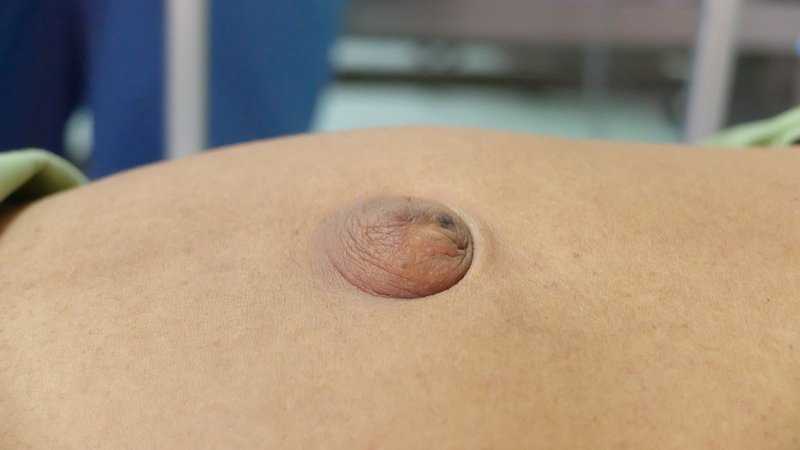Little-known lesion leads to deadly prognosis
M3 Global Newsdesk Nov 10, 2018
A small, easily overlooked nodule inside the belly button can be an important warning signal of advanced cancer. It’s often the first sign of a very dim prognosis, but early identification and diagnosis of this lesion may just turn the situation around.

This relatively rare presentation has a rather innocuous name—Sister Mary Joseph’s nodule—yet it’s anything but harmless. It’s a metastatic lesion in the belly button (umbilicus) that usually originates from a primary, intra-abdominal malignancy. Primary cancer sites include the stomach, ovary, colon, pancreas, and others.
Sister Mary Joseph’s nodule is often a subtle clinical sign. It may not even appear as a nodule per se, but as a rounded area of thickened or hardened subcutaneous tissue measuring about 10 mm-15 mm. It can grow to a more florid, protuberant lesion that may ulcerate and exude serous fluid, pus, or blood.
It typically goes unnoticed until the malignant tumor is well advanced. So, when it is found, it’s usually considered a sign of poor prognosis. But not always.
Timely diagnosis, better prognosis
Earlier this year, oncologists at Teikyo University School of Medicine, Tokyo, Japan, reported the case of a 66-year-old woman with a reddened and palpable 15 mm × 10 mm induration in the umbilical fossa. The referring physician had prescribed antibiotics, which had no effect. Given this, the hospital physicians decided to perform a biopsy.
The biopsy detected adenocarcinoma. This finding prompted an upper gastrointestinal endoscopy, which identified type IV advanced gastric cancer in the anterior wall of the gastric corpus.
“Since the definitive diagnosis could be made before the general condition of the patient deteriorated, systemic chemotherapy was started as the standard therapy,” the authors wrote. “As a result, [the Sister Mary Joseph’s nodule] was reduced and carcinomatous peritonitis was improved. The patient was still alive 21 months after the diagnosis.”
The oncologists advised physicians in routine clinical practice to consider the possibility of Sister Mary Joseph’s nodule, even for minimal changes in the umbilicus. Timely diagnosis can identify early intra-abdominal malignant tumors so that treatment can potentially improve the patient’s prognosis.
Sister Mary Joseph finds a mass
So, why is this unwelcome lump called Sister Mary Joseph’s nodule? As detailed in a classic article on the subject, it was named after Sister Mary Joseph Dempsey, who in the late 1800s became first surgical assistant to William Mayo, MD, founder of the Mayo Clinic, Rochester, MN.
While prepping patients with gastric cancer for surgery, Sister Mary Joseph observed that some patients had a firm mass in the umbilicus. She realized that these patients always had poor outcomes and died relatively early, despite the surgery.
Sister Mary Joseph brought this to the attention of Dr. Mayo, who described this lesion in a 1928 article as “pants button umbilicus.” In 1949, British surgeon Sir Hamilton Bailey, a renowned author of surgical textbooks, renamed it in honor of Sister Mary Joseph.
But Dr. Mayo hadn’t overlooked Sister Mary Joseph’s contributions. She remained his assistant for 25 years. When she died in 1939, Dr. Mayo wrote, “Of all the splendid surgical assistants I have had, she easily ranks first.”
This story is contributed by John Murphy and is a part of our Global Content Initiative, where we feature selected stories from our Global network which we believe would be most useful and informative to our doctor members.
-
Exclusive Write-ups & Webinars by KOLs
-
Daily Quiz by specialty
-
Paid Market Research Surveys
-
Case discussions, News & Journals' summaries